Marvão is a historical medieval town in the Portalegre region of Alentejo. It stands atop a rocky cliff in the Sierra de Sapoio mountains, at an elevation of 860 metres.
The greater municipal region of Marvão covers almost 155 square kilometres and has a population of 3,512. The town itself has around 105 inhabitants.
In the tenth century, the Cordobese historian Isa de Ibn Áhmad ar-Rázi referred to the rocky heights on which the town and fortifications stand as “Amaia de Ibn Maruán” and the “Amaia Fort, among other names”. Ibn Maruán was a Muladi from a noble family from Merida who led a rebellion against the Emirate of Cordoba, in the last quarter of the ninth century. The impregnable mountain range has served as a natural fortification throughout history, among others in 876-877 CE by Ibn Maruán, from whom the town takes its present name of Marvão.
The manmade walls and towers are integrated seamlessly into the rocky scarps. The chief sites of interest to visitors are the castle of Marvão with its imposing wall; the municipal museum, the cultural centre, the museum and ruins of the Roman city of Ammaia; the Quinhentista Bridge, the swimming pool, and the beach on the River Severe in Portagem. Situated in the Serra de São Mamede Nature Park, the Marvão region boasts unique flora and fauna and some stunning scenery. It also has leafy paths and fertile valleys, with excellent conditions for trekking, cycling and horse-riding.
Highlights in the cultural calendar include the Chestnut Fair, the Al Mossassa Islamic Festival (twinned with Badajoz), the International Festival of Classical Music and the International Film Festival. We also partner with our neighbours from Valencia de Alcántara across the border in Extremadura in a range of cultural and sporting events, including a recreation of the royal wedding between King Manuel I of Portugal (Manuel the Fortunate) and the Infanta Isabella of Aragon
The local cuisine is very traditional. Throughout the year, the municipality organises a range of gastronomic events, centring on oil, kid goat and lamb, cod, chestnuts and game. Desserts include chestnut sweets, boleima de maçã apple cake, etc.
Amongst Marvão’s best-known craft products are its traditional “chestnut peel embroidery”.
In every direction, magnificent scenery stretches as far as the eye can see. This is Marvão. The rhythm of the town is set by the natural heartbeat of the Serra de São Mamede Nature Park, surrounding the town on all sides. This idyllic landscape contains vestiges of the earliest human settlement in the area.
We are currently participating in two candidatures for world heritage site listings: the “Bulwarked Fortifications of the “Raia” (Border)” submitted in conjunction with Elvas, Almeida and Valença. and a joint candidacy with 20 other towns for the “intangible heritage of Amphora Wine (Vinho da Talha).”
Marvão: see it, feel it, enjoy it… and never forget it.
AMMAIA – Marvão, Portugal

City of Ammaia
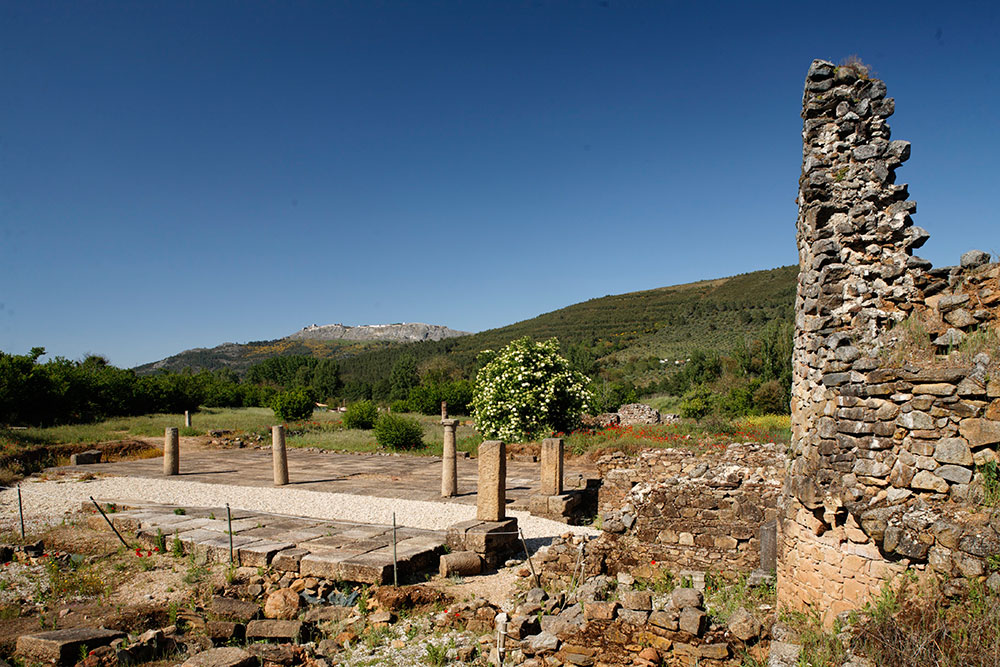
Unquestionably the most important remnants of the Roman period in the northern area of Alentejo are the ruins of the city of Ammaia. Located in São Salvador de Aramenha, in the municipal area of Marvão, in the heart of the Serra de São Mamede Nature Park, the central area is formed by Quinta do Deão and Tapada da Aramenha, covering an area of 25 hectares.
Although the complex became a listed national monument in 1949, it remained abandoned until the end of 1994. Since then, with the creation of the City of Ammaia Foundation, everything possible has been done to study and conserve what remains of this important city. Ammaia was elevated to the status of Civitas around 44-45 CE and Municipium later in the first century CE, however the only documented information on the city dates from the reign of Lucius Verus, in 166 CE.
The entire urban area of the Roman city is now visible, and important structures have already been identified such as the podium of a temple, probably from the first century, and some public baths, as well as other domestic structures.
The on-site Monographic Museum of the City of Ammaia, tells the story of the everyday life of the inhabitants of the town, with displays of different items found at the site. They include a stone from a ring with Jewish symbols (menorah, lulav, shofar and etrog) and one of the most important collections of Roman crystals found anywhere on the Iberian peninsula.
Much of the area of the ruins stands on land owned by the City of Ammaia Foundation, whose main purpose is the study, recovery and conservation of this important National Monument.
Estrada da Calçadinha 4
7330-318 São Salvador de Aramenha, Marvão
GPS Coordinates:
Latitude 39.3701254
Longitude -7.3880976
www.ammaia.pt
Phone: +351 245 919 08
ammaia@ammaia.pt
Timetable
- From Monday to Sunday from 9 a.m. to 12:30 a.m. and from 2:00 p.m. to 5:30 p.m.
Castle
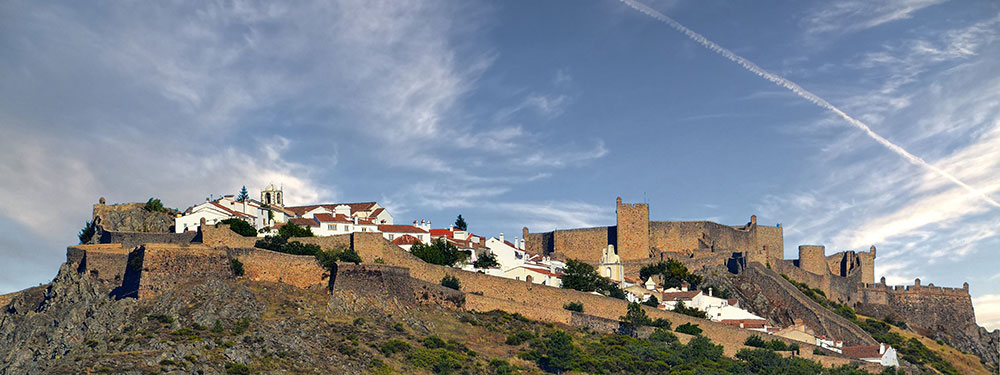
The Castle of Marvão was a strategic defensive fortification, built facing the Castilian border, some 13 kilometres away. It was also an effective refuge and an extraordinary viewing point, with clear views over the second most important route taken by penetrating Spanish armies, from Valencia de Alcántara, in a vast area of the Alentejo Heights from Badajoz to the River Tagus. Its strategic value is obvious: following the Treaty of Alcanizes, it formed part of the first line of defence stretching from Montalvão to Elvas in what is now the district of Portalegre.
Castelo de Marvão
7330, Marvão
GPS Coordinates:
Latitude 39.3968898
Longitude -7.382051
www.cm-marvao.pt
Phone +351 245 909 138
castelo@cm-marvao.pt
Timetable
- Open every day from 10 a.m. to 5 p.m.
Câmara Velha – Cultural Centre
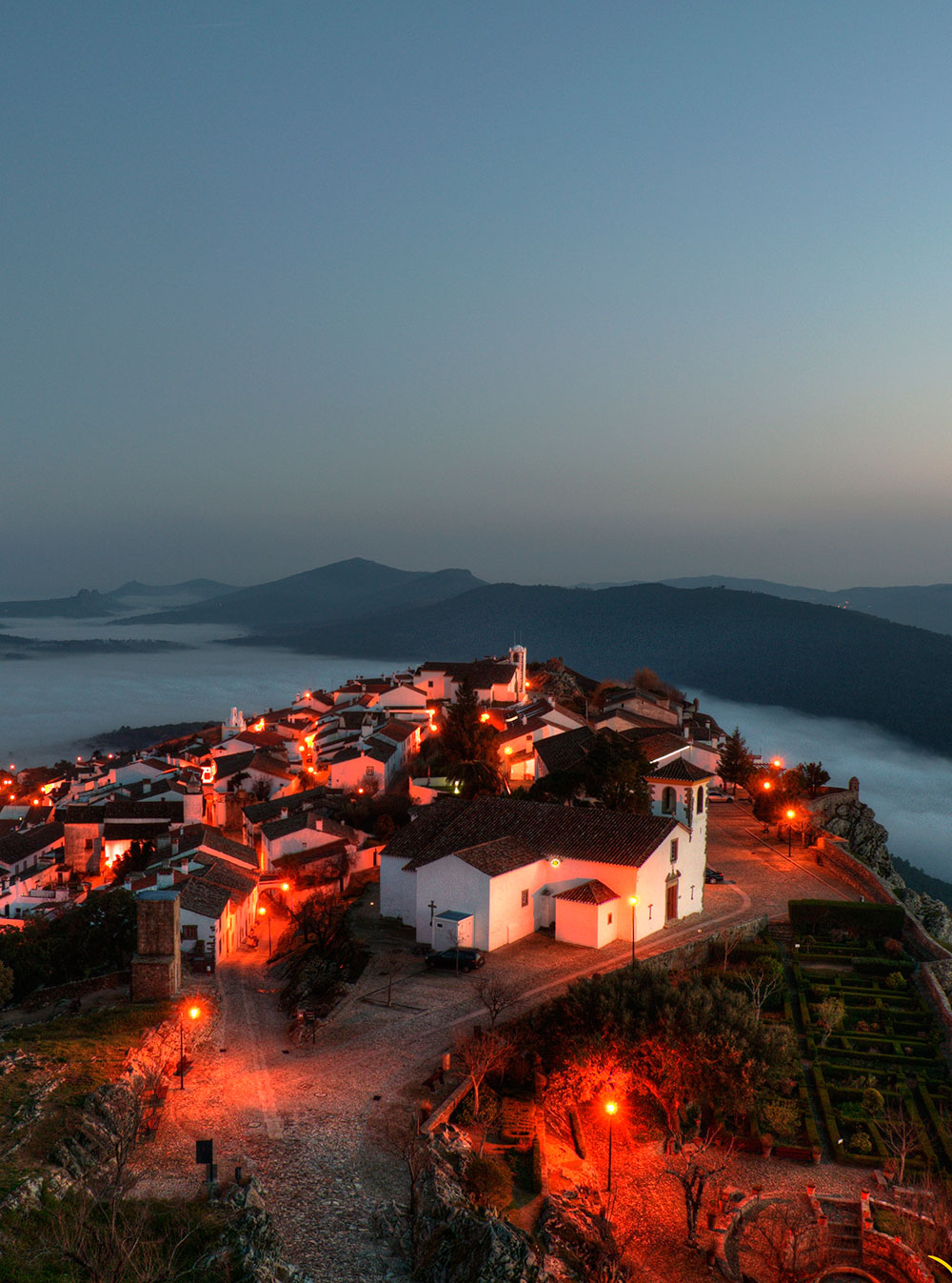
The Old Chamber was the seat of the local town council (Paços do Concelho) from its construction in the reign of King Manuel (15th-16th century), until 1956, when the current town hall was opened. The style of the building matches the Manueline coat of arms and the granting of a town charter in 1512.
This is one of the most important works of civil architecture of the town and also the town’s oldest building. Its strategic location reflects its political and administrative importance over the ages and its place as a symbol of local justice and power. It overlooks in the Praça do Pelourinho (also called the Town Square), at the junction between Rua de Cima, Rua das Portas da Vila and Rua do Relógio, which lead to the three gates in the medieval walls (the Ródão Gate, Vila Gate and Torrejón Postern, respectively).
Rua 24 de Janeiro nº1
7330-122 Marvão
GPS Coordinates:
Latitude 39.3936265
Longitude -7.378262
www.cm-marvao.pt
Phone: +351 245 909 137
camara.velha@cm-marvao.pt
Timetable
- From Monday to Sunday from 9.30 to 13.00. and from 2:00 p.m. to 5:30 p.m.
Municipal Museum
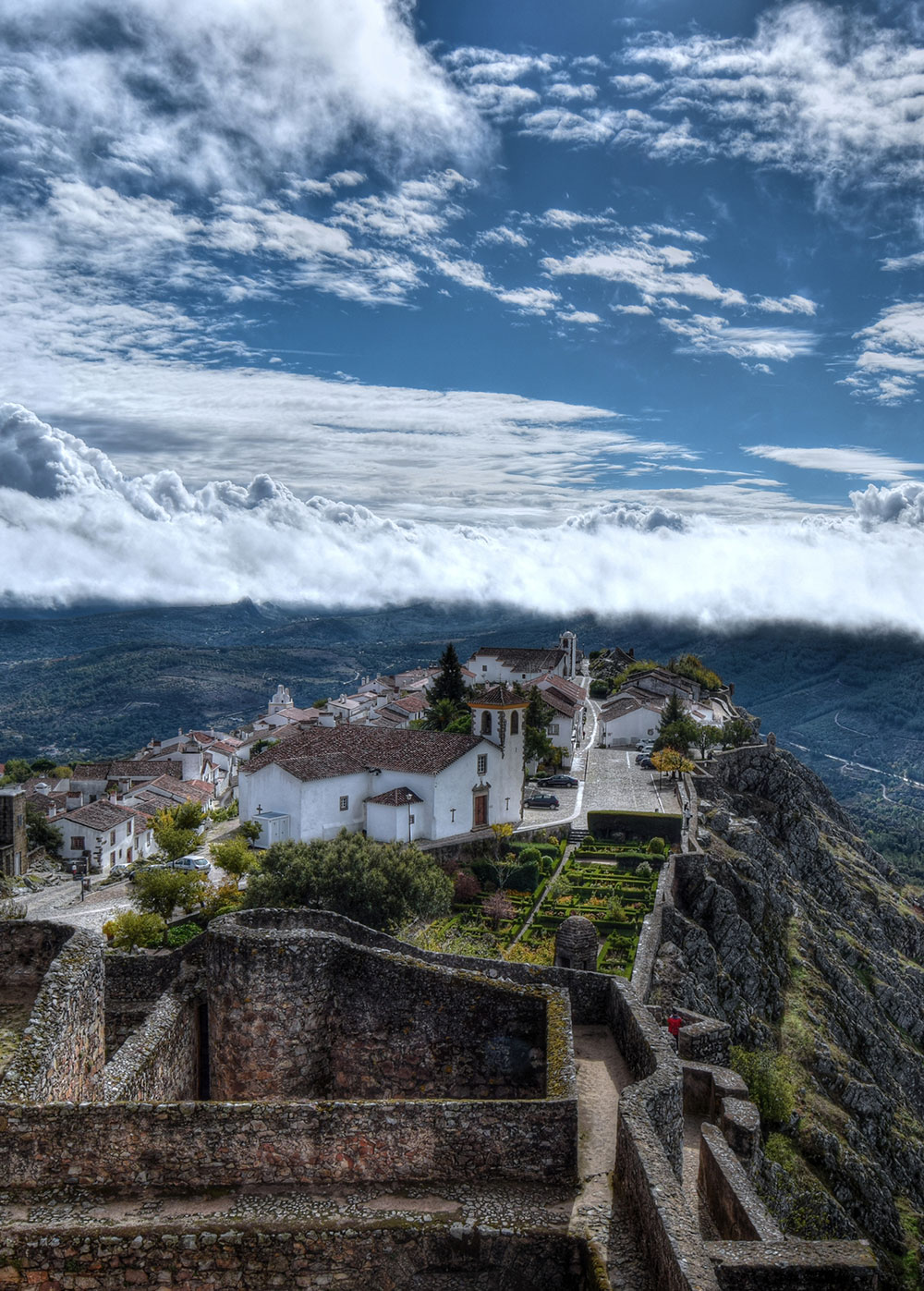
The deconsecrated and ruined Church of Santa María, has been restored to house the Municipal Museum of Marvão.
The rich and varied items on show offer visitors a glimpse of the history of the municipality of Marvão, from the early stone age to more recent times.
There are plenty of Roman pieces on display including ceramics, metal, glass and epigraphs. Most of these items come from the excavations in the Roman burial ground of Herdade de los Palomares and the Roman city of Ammaia.
Church of Santa María
Largo de Santa Maria
7330-101 Marvão
GPS Coordinates:
Latitude 39.3948328
Longitud -7.3800912
www.cm-marvao.pt
Phone: +351 245909132
museu.municipal@cm-marvao.pt
Timetable
Every day except Monday from 10:00 a.m. to 12:30 a.m. and from 1:30 p.m. to 5 p.m.
Oficina de turismo
Rua de Biaxo s/n
7330 – 111 MARVÃO
www.marvao.pt – www.cm-marvao.pt
Teléfono: +351 245 909 131
turismo@cm-marvao.pt
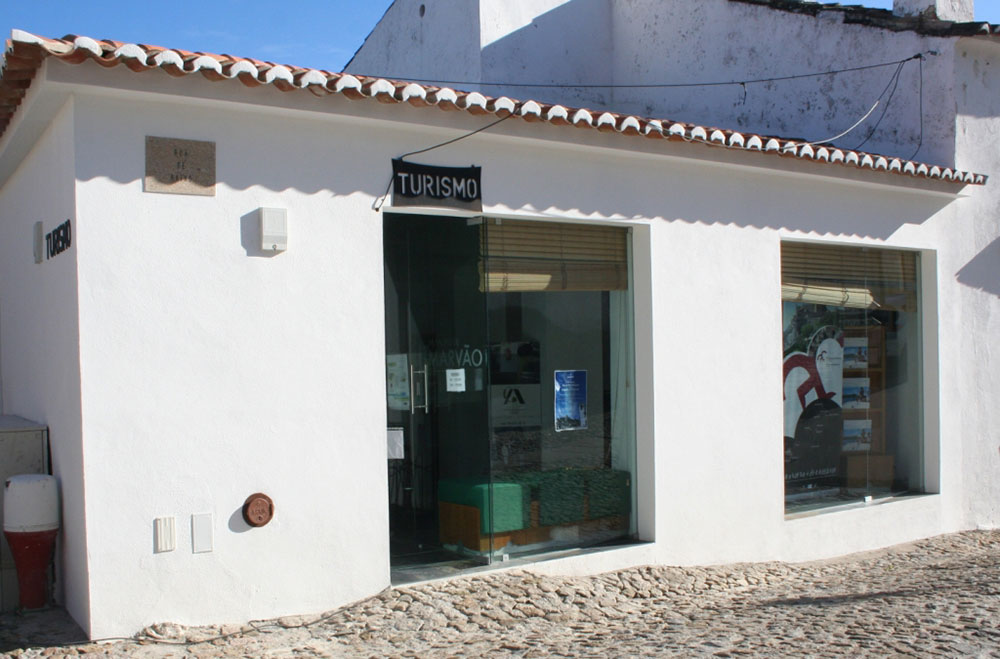
Horario
- 10:00 – 17:00h (Cerrado el 24 y 25 de diciembre)
